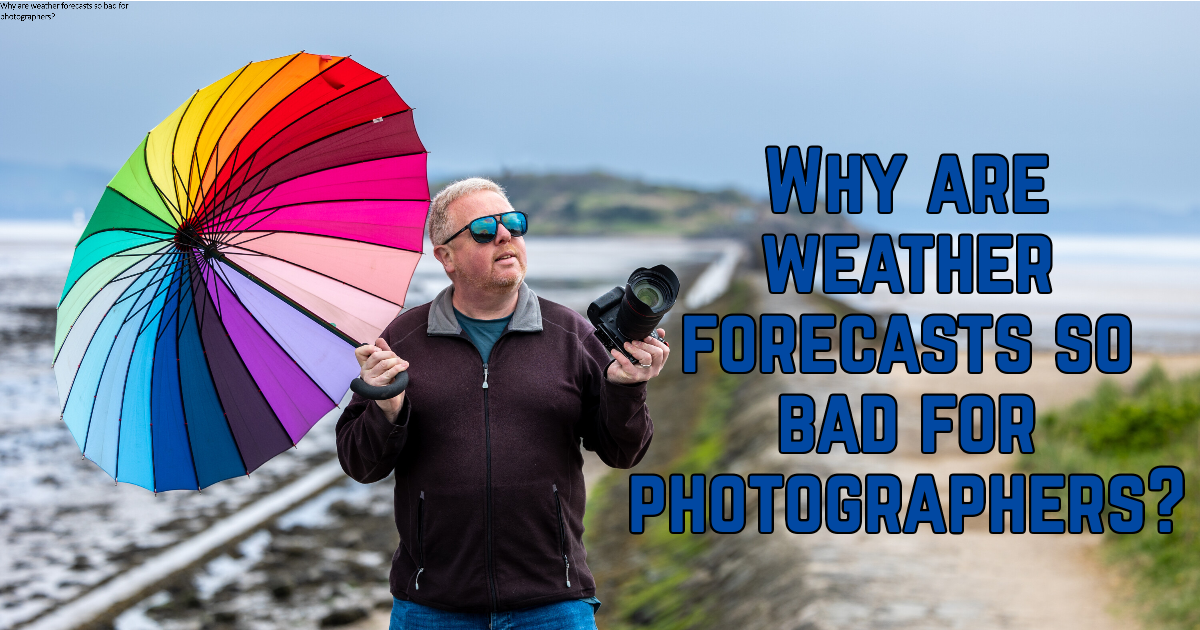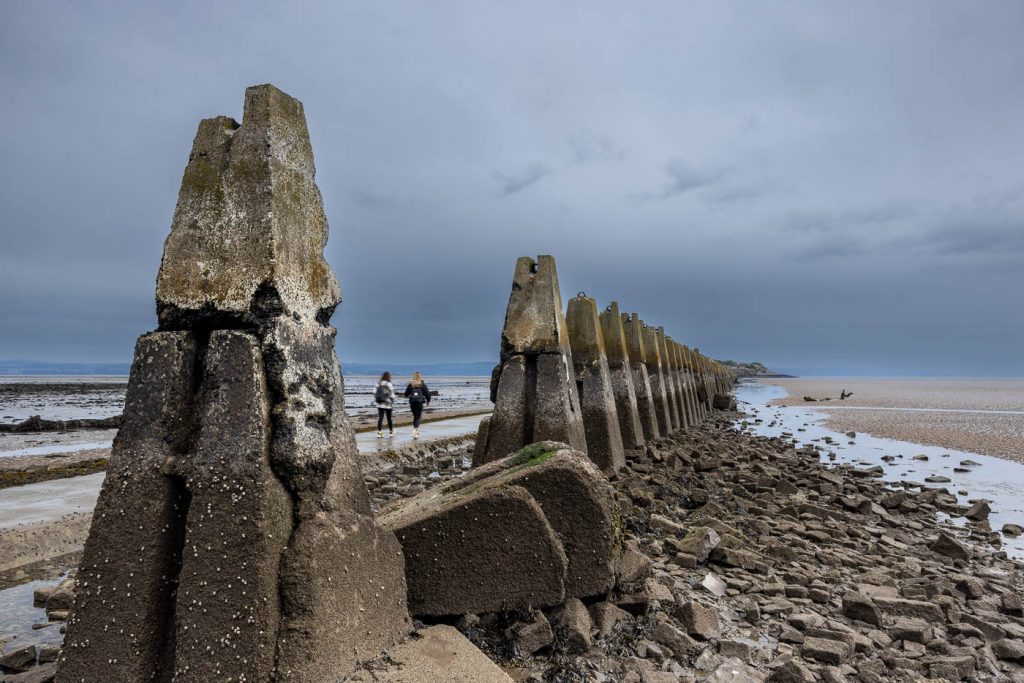April 26, 2023
Why are weather forecasts so bad for photographers?
Landscape photography doesn’t always need great weather, but good forecasts do help landscape photographers get great photos

Every two years, I like to review the weather forecasting services I use to decide whether we’ll run workshops. Clear blue skies and sunshine aren’t always the best conditions for photography. Equally, a full day of rain and flat grey skies is also pretty dull, especially for my Landscape & Seascape workshops. About three days before a workshop is due to run, I check out weather forecasts from several services and take a view if we are going to go ahead or reschedule.
2023 feels like it has been a lousy year for forecasters. I have cancelled workshops based on weather forecasts, and the actual weather has been okay. The reverse has also been true where I have gone ahead, and we’ve been soaked. I don’t like to trust feelings alone, so I have used this as an impetus to track the weather forecasts for seven days before a landscape workshop and compare this to the actual conditions.
Which forecasts are included?
For the 2023 weather forecast tracking, I have used seven different services. The last time I did this in 2021, I also compared seven forecasting sites, but two of them have dropped out, and two new ones have been added. The ones removed are Dark Sky, the winner in 2021, as new owners, Apple, have switched off the service. WeatherPro has also been dropped as it only forecasts three days in the future, whereas I wanted to judge seven days out. This leaves the following services to be judged this time.
BBC Weather ( https://www.bbc.co.uk/weather)
The BBC is a trusted broadcaster; many will rely on its weather forecasts accompanying news broadcasts throughout the day. MeteoGroup provides the weather data. They have 180 active meteorologists stationed worldwide and are backed by over 20,000 weather stations. They claim to provide the most accurate, hyper-local forecasts available in the world.

Met Office (https://www.metoffice.gov.uk/)
The Met Office is the national meteorological service for the UK. They pride themselves on pushing the boundaries of scientific, technological and operational expertise. Their forecasts are supported by a super-computer capable of 14,000 trillion arithmetic operations each second. The technology is supported by ‘the very best people and a culture to match’.

Weather Underground (https://www.wunderground.com/)
Weather Underground says it has challenged the conventions around how weather information is shared with the public. They use 250,000+ members sending real-time data from their own personal weather stations, which provides extensive data that feeds into the forecasts. They use meteorologists and climatologists to provide valuable insight into the science behind the data and the relationship between weather and climate change.

Metcheck Weather (https://www.metcheck.com/)
Metcheck was set up in 1998. It has seven bases around the world with teams of qualified meteorologists. Most of their forecasts are driven by computer models, with 1GB of data flowing through its servers daily. It aims to be a global weather site which has that personal touch.

XC Weather (https://www.xcweather.co.uk/)
The forecast data displayed by XCWeather is from a high-quality numerical weather prediction model run by the United States government (GFS) and is updated every six hours. XC Weather is totally automated, and current weather information is taken from instruments cited at each location.

Clear Outside (https://clearoutside.com/)
This is a UK-based service in Exeter. They are a group of 16 astronomers who are forecasting for astronomers. An API from MeteoGroup drives their core data.

Windy (https://www.windy.com/)
Windy was launched in 2014 by Ivo, who describes himself as “an addicted kiter, helicopter and jet pilot, who constantly seeks the wind, waves, METARs and powder snow. Since programming is my passion, I coded Windy just for fun as my pet project. My goal is to keep Windy small and fast rather than not destroy it by adding new features and making it slow and big.”

How do we decide who is best?
I have changed the scoring method this time to reflect the kind of things that I look for when deciding to go ahead with a workshop session. The four things I want from weather forecasters to determine whether to run the workshops are the temperature, the amount of rain, the amount of wind and the conditions such as cloud cover that we can expect. I have created a scoring system that takes daily predictions from seven days before the workshop date and compares these to the actual conditions on the day.
Temperature – if a forecaster is within 2 degrees of the actual temperature, they receive 3 points. If they are within 5 degrees, they receive 1 point: any variance greater than 5 degrees scores 0 points.
Wind – when a forecaster is within 5 miles per hour, they are awarded 3 points. Within ten mph, they receive 2 points. Outside of this, they get 0 points.
Rain – If a forecaster has predicted rain with a greater than 50% probability and it does rain, they receive two points. Similarly, if they have a less than 50% probability and it doesn’t rain, they get 2 points. When they get it wrong, they get zero points.
Conditions – If a forecaster is close to describing the conditions, they will receive three points. If there are some elements correct, then they get 1 point. When the conditions described are totally wrong, they are awarded zero points.
I have then added a multiplier to the daily score. If the prediction is seven days out, the daily score is multiplied by 1.7. At six days out, it is multiplied by 1.6 and so on. This gives a higher score the further out a weather forecaster can predict the conditions.
How did they do?
Most of the weather forecasters were able to predict the temperature. Clear Outside scored a perfect 21 points for predicting each of the seven days the temperature within 2 degrees. The Met Office closely followed them, who only failed to predict correctly on one day.
Regarding wind speed predictions, the BBC Weather site took the spoils. The remaining forecasters were closely bunched, except for the Met Office, who only started to get accurate results towards the end of the seven days.
The precipitation forecasts were probably the least accurate. Met Office predicted rain correctly for 6 out of 7 days, and Clear Outside and Windy got 5 out of 7. The rest fared somewhat less well.
Conditions forecasting was also taken by the Met Office, which was closely followed by Windy. The poorest performance came from MetCheck, Weather Underground and BBC Weather.

And the winner is…
The 2023 weather forecasters survey winners are the Met Office. Except for their wind speed predictions, they did a pretty good job across the board. Clear Outside and Windy were close to taking the top prize and could easily have won with slightly better performance in one category. Clear Outside took second, ahead of Windy.
There was then a large gap to fourth-placed XC Weather. Another significant gap separated the remaining suppliers, with BBC Weather in 5th, MetCheck in 6th, and someway further behind in last place was Weather Underground.

Please give us your feedback.
If you’ve got any questions or comments, leave them below. You can sign up for the Edinburgh Photography Workshop monthly newsletter, where you’ll get regular updates on exciting things happening in photography and some great tips. Sign up by clicking here.
About the author
As well as running Edinburgh Photography Workshop, Rich Dyson is a professional photographer. His photographs are regularly used in newspapers such as The Times, Guardian and Daily Telegraph. He also had two solo exhibitions and was featured in a members-sponsored exhibition in the Scottish Parliament. You can see and buy his photography at richdysonphotography.com.